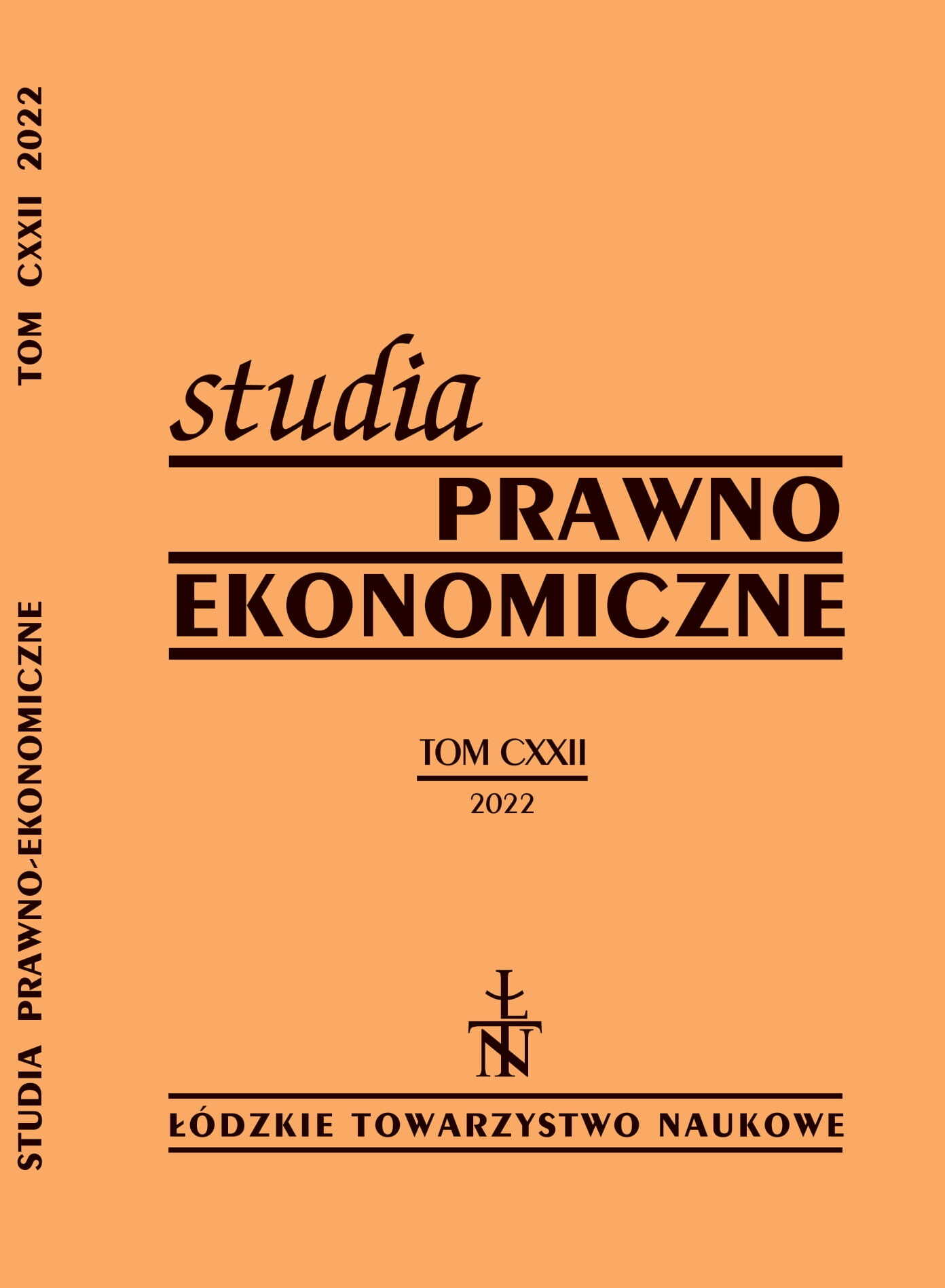Long-term unemployment in Poland between 2015 and 2019
DOI:
https://doi.org/10.26485/SPE/2022/122/9Keywords:
unemployment, long-term unemployment, labour force groupsAbstract
Background: This article presents an attempt to capture trends in long-term unemployment, determine its structure and intensity regarding labour force groups, and identify factors that contributed to long-term unemployment in Poland between 2015 and 2019.
Research purpose: An economic, multifaceted analysis of long-term unemployment in Poland in the years of economic upturn from 2015 to 2019.
Methods: An empirical analysis using quarterly aggregate and individual data on unemployment sourced from LFS conducted from 2015 to 2019. Non-parametric and parametric methods (a logit model) were also used.
Conclusions: The highest probability of long-term unemployment compared with the base categories characterised people aged 45 or older, people with junior secondary, elementary or incomplete elementary education, the unemployed seeking jobs through labour offices, urban residents, and the residents of voivodeships other than the Mazowieckie voivodeship (excluding Lubelskie). The lowest risk of long-term unemployment compared with the base categories occurred among people aged up to 24 years, higher education graduates, and people with postsecondary and secondary education, married people, active-job seekers, and the residents of the Lubelskie voivodeship.
Downloads
References
Aktywność ekonomiczna ludności Polski, GUS, Warszawa, różne wydania z lat 2015–2020.
Arruda E.F., Guimaraes D.B., Castelar J., Castelar P.U.C., Determinants of Long-Term Unemployment in Brazil in 2013, International Journal of Economics and Finance 2018/10/6, pp. 53–64.
Ball L., Hysteresis in Unemployment: Old and new evidence, NBER Working Paper 2009/14818, National Bureau of Economic Research, Cambridge.
Bronk A., Wiśniewski Z., Wojdyło-Preisner M. (eds.), Ryzyko długotrwałego bezrobocia w Polsce. Diagnoza i metody zapobiegania, Wyd. Ministerstwa Pracy i Polityki Społecznej oraz Centrum Rozwoju Zasobów Ludzkich, Warszawa 2014.
Cameron A.C., Triverdi P.K., Microeconometrics, Methods and Applicants, Cambridge University Press, New York 2005.
Chow G.C., Ekonometria, PWN, Warszawa 1995.
Gruszczyński M., Modele zmiennych jakościowych dwumianowych, in: M. Gruszczyński (ed.), Mikroekonometria. Metody i analizy danych indywidualnych, wydanie II rozszerzone, Oficyna a Wolters Kluwer business, Warszawa 2012, pp. 71–122.
Kucharski L., Long-term Unemployment in Poland in 2008–2012 – Tendencies, Structure and Selected Determinants, Olsztyn Economic Journal 2013/8 (4), pp. 347–359.
Kucharski L., Kwiatkowski E., Bezrobocie długookresowe w Polsce w latach 1992–2000 – tendencje, struktura i determinanty, in: S. Krajewski, T. Tokarski (eds.), Wzrost gospodarczy, restrukturyzacja i bezrobocie w Polsce: ujęcie teoretyczne i praktyczne, Wyd. Katedra Ekonomii UŁ, Łódź 2002, pp. 283–305.
Lallukka T., Kerkelä M., Ristikari T., Merikukka M., Hiilamo H., Virtanen M., Øverland S., Gissler M., Halonen J.I., Determinants of long-term unemployment in early adulthood: A Finnish birth cohort study, SSM – Population Health 2019/8, pp. 1–12.
Layard R., Nickell S., Jackman R., Unemployment: Macroeconomic Performance and the Labour Market, Oxford University Press, Oxford 1991.
Machin S., Manning A., Long-term Unemployment in Europe, in: O. Ashenfelter, D. Card (eds.), Handbook of Labour Economics, Vol. 3C, North Holland, Amsterdam 1999.
Maksim M., Wojdyło-Preisner M., Determinanty długotrwałego bezrobocia w Polsce – perspektywa lokalna, Gospodarka Narodowa 2015/4 (278), pp. 117–136.
Nesporova A., Long-term unemployment in Central Europe: A review of its nature and determinants in five countries, Employment Working Paper 2017/218, ILO, Geneva.
Spermann A., How to fight long-term unemployment: Lessons from Germany, IZA Journal of Labor Policy 2015/4 (1), pp. 4–25.
Śliwicki D., Ekonometryczna analiza czynników bezrobocia długookresowego, Oeconomia Copernicana 2013a/2, pp. 39–56.
Śliwicki D., Wpływ głównych czynników makroekonomicznych na bezrobocie długookresowe, Wiadomości Statystyczne 2013b/3 (622), pp. 1–12.
Wojdyło-Preisner M., Determinanty długotrwałego bezrobocia na przykładzie miasta Białystok, Optimum. Studia Ekonomiczne 2013/6 (66), pp. 136–147.



